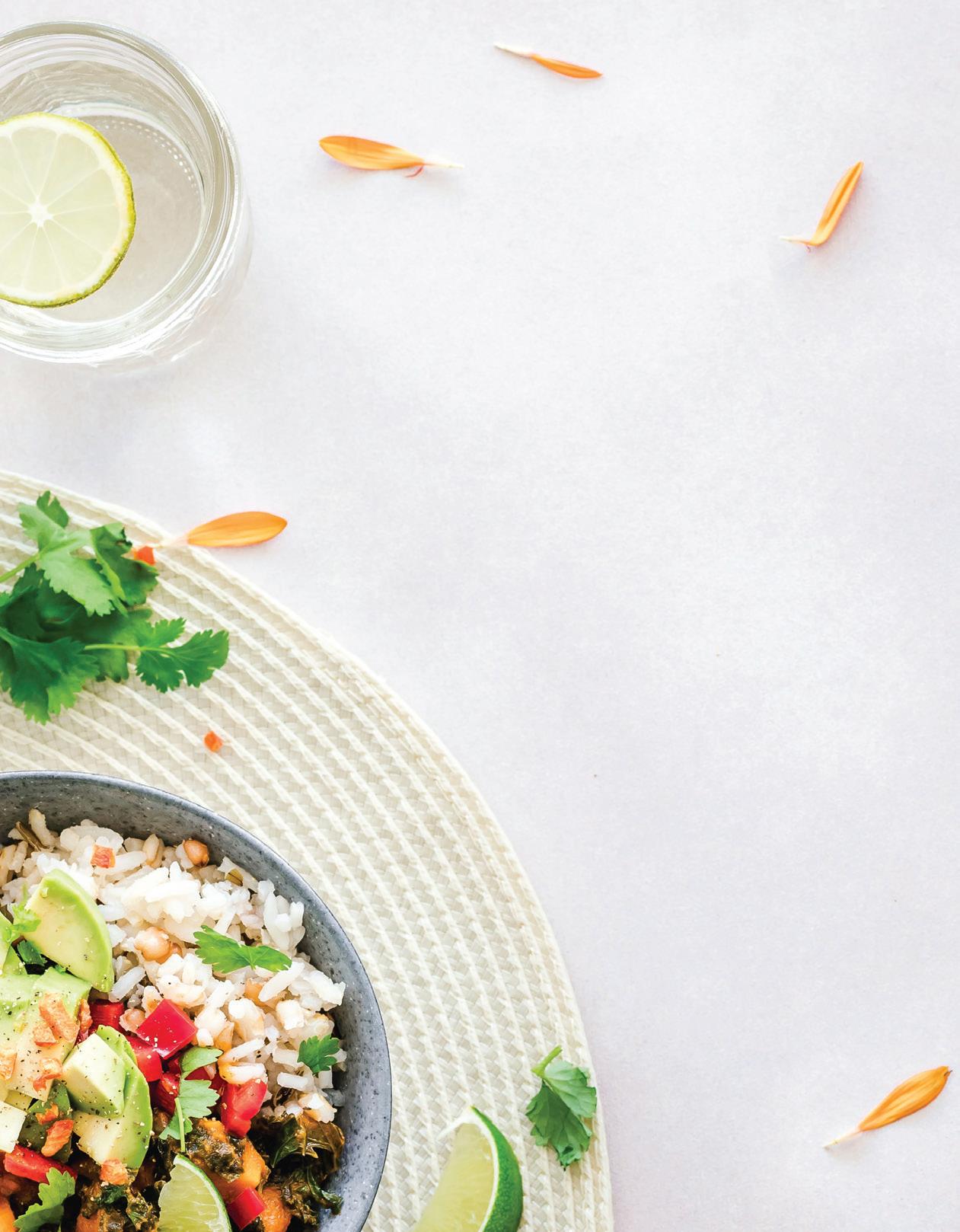
4 minute read
FILLING THE GAPS IN FIREFIGHTERS NUTRITION
FILLING THE G APS IN FIREFIGHTER NUTRITION
by Megan Lautz, MS, RD, TSAC-F
“
HONESTLY MEGAN, I DON’T KNOW WHERE TO START,” SAID THE CAPTAIN OF ONE OF THE BUSIEST STATIONS IN NORTH AMERICA.
WITH THIS KIND OF SHIFT.”
Busy shifts, limited dinner funds and food preferences are some of the challenges firefighters face, so the usual options are spaghetti, burgers or a bacon-wrapped pork loin – if the chef is feeling fancy and if the shift hasn’t resorted to fast food because it was impossible to get back to the station. It’s no secret that firefighter dietary practices lack nutrient quality.
In terms of health risks, cardiovascular disease is the cause of 45 percent of line-ofduty deaths, while cancer is responsible for 27 percent of all-cause mortality in firefighters.
Does it all come down to diet?
The typical firefighter diet is a likely contributor to these health risks. Dinners are cultural and eaten as a shift with a competitive vibe in some stations that pushes some firefighters to see who can eat the most or the fastest. Dinners tend to be high in calories, fat and unrefined carbohydrates. There’s always ice cream in the freezer, just in case community friends haven’t already dropped off something sweet. Breakfast might be a donut or a breakfast sandwich on the go.
Not every shift eats this way, of course. Many firefighters have made the effort to clean up their own eating habits and try to convince their shiftmates to make the same changes. For shifts that do fall into the typical firefighter diet, however, a dietary overhaul is in order!
FIBER AND HEART HEALTH
Fiber is an indigestible form of carbohydrate found in fruits, vegetables, whole grains and legumes that is particularly effective at sweeping lowdensity lipoproteins (LDL) – or “bad” cholesterol – from the blood for elimination in the stool. Fiber also slows the digestion of foods, providing a feeling of fullness, and allowing for better nutrient absorption. High fiber foods such as vegetables often take more room on a plate, tricking the brain into thinking the body is getting more food and edging out higher fat or unrefined carbohydrate options.
Most Americans are lucky to eat 15 grams of fiber daily but the American Heart
Association recommends almost double that – 25 grams per day for women and 38
grams per day for men. The difficulty is that, apart from whole fruit and some snack bars, it’s hard to carry fiber-rich foods on the go. Consider bringing a bag of apples to put on the kitchen table and try to get at least one serving of vegetables at dinner, if not two. Oatmeal or a smoothie with flaxseed are good, fiber-rich breakfast options.

OMEGA-3S AND COGNITIVE FUNCTION
Omega-3 fatty acids are polyunsaturated fats including alpha-linolenic acid (ALA), eicosapentaenoic acid (EPA) and docosahexaenoic acid (DHA). ALA is found in mostly plant-based foods, while EPA and DHA are found mostly in fish and other seafood. These powerful Omega-3s are often associated with major health benefits, from combatting heart disease to improving brain function. Coldwater fish such as salmon, mackerel, tuna and sardines contain the highest levels of EPA and DHA.
Studies show that diets high in omega-3s may be associated with a reduced risk of cognitive decline and dementia and may have a modest impact on depression.
For you to reap the benefits, the American Heart Association recommends eating two 3.5-ounce servings of fatty fish per week. Hate fish? You should substitute 1,000 mg of combined EPA and DHA is suitable under the supervision of a physician.
PROTEIN AND MUSCLE HEALTH
For firefighters, the amount of protein consumed in a day is rarely a problem – timing is. Most of us tend to eat less protein in the morning and double it at dinner time. Evenly distributing protein
throughout the day is a better way to promote muscle gain when weight training, and to mitigate muscle loss when dieting.
Ideally, your total protein intake should be distributed evenly every three to four hours, but this might not be possible at a busy station. At each meal, do your best to get a good protein source, which could include beans, lentils, tofu, dairy, eggs, poultry, fish or lean beef. A protein shake is a good option on the go, but try to limit them to one per day to allow room for real food.
Megan Lautz is a Registered Dietitian & Personal Trainer with a Masters in Sports Nutrition for Montgomery County Fire Rescue (in MD. USA). Megan’s mission is to help firefighters perform better, recover faster and live longer. For more from Megan, visit @rescue.rd on Facebook or Instagram.
EATING PACE AND PORTION CONTROL
Slowing down the pace at which you eat can determine how much food you consume. Those who take their time eat less, find meals more enjoyable and eat an average of 25 percent less in snacks three hours after a meal. If this is unrealistic on shift, focus on slowing down at home. Keep pace with the slowest eater at the table or try using chopsticks. On shift, try eating half of your meal at a normal pace then slow down for the second half. If the tones drop, at least you’ll have eaten something to hold you over until you get back to the firehouse.










